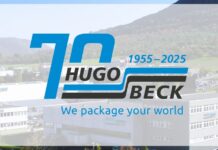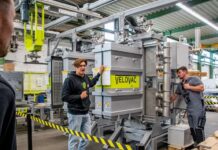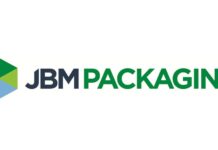Findings from a recent insight hold particular significance due to their alignment with the EU’s Single-Use Plastics Directive Implementing Act and the ongoing development of the draft PPWR. This research represents the second installment in a series investigating circular economy pathways for PET/polyester in Europe. Expanding on its predecessor, this insight presents outcomes from a comprehensive modeling exercise along with an actionable strategy for stakeholders.
The study was crafted under the guidance of an independent Steering Group, composed of experts from diverse sectors including the public sphere, academia, civil society, and industry. Eastman and Interzero commissioned and funded this research initiative. Ben Dixon, Partner and Head of Materials and Circular Economy at Systemic, highlighted the ongoing transformative trends within the PET and polyester market in Europe. Notably, he pointed out the emergence of innovative recycling technologies, ambitious recycling targets, and a surge in fashion companies investing in recycled polyester sourced from PET bottles. In this context, the study offers a pioneering system-level analysis that envisions cohesive circular economy solutions for PET and polyester. The aim is to curtail demand growth, promote reuse and recycling, and reduce greenhouse gas emissions. Dixon underscored the optimistic conclusion that the tools, technologies, and policy momentum required for building a circular PET/polyester system are at hand, emphasizing the need for scaled investment and proactive measures.
The broader PET/polyester system in Europe has a prevailing linear nature, despite the relative success of PET bottle recycling. The report quantifies the potential circularity of the PET/polyester system when leveraging available strategies. However, these actions alone would be insufficient to achieve Europe’s net-zero commitment by 2050. She emphasized the necessity for both innovation and strategic systemic choices such as constraining fast fashion.
The study demonstrates a feasible circular, low-emission future for PET/polyester in Europe. Key to this transition is the substantial expansion of chemical PET recycling infrastructure by 2040, complementing mechanical recycling growth. This comprehensive approach broadens the range of PET/polyester products that can be recycled, thereby enhancing circularity and system resilience.
This study’s validation of the reduce-reuse-recycle hierarchy, emphasizes its significance in enhancing PET/polyester circularity. Opportunities are presented by the PPWR and EU Textiles Strategy but noted that these measures fall short of the legal framework required to implement the study’s recommended strategies. A need for robust reduction and reuse targets and clear directives has been stressed to align mechanical and chemical PET/polyester recycling efforts. These, among other aspects, require further clarification and reinforcement to drive meaningful change.



























